The goal is not immediately fixed
Author: Els Rengenhart
Occupational therapist and SI specialist
Sensors Reflective Balls consists of four stainless steel balls of 6, 8, 10 and 15 cm diameter. The balls are lightweight and have a mirror-smooth surface. The balls can be used in many different ways. The goal is not immediately fixed. Below are some game suggestions.
Looking and moving:
1. 'Laugh' mirrors
The balls look very nice and especially entice you to look and move. The mirrored surface immediately challenges you to use them as a mirror. The round shape of the balls distorts the reflection, creating the effect of a funhouse mirror.
2. Move balls slowly
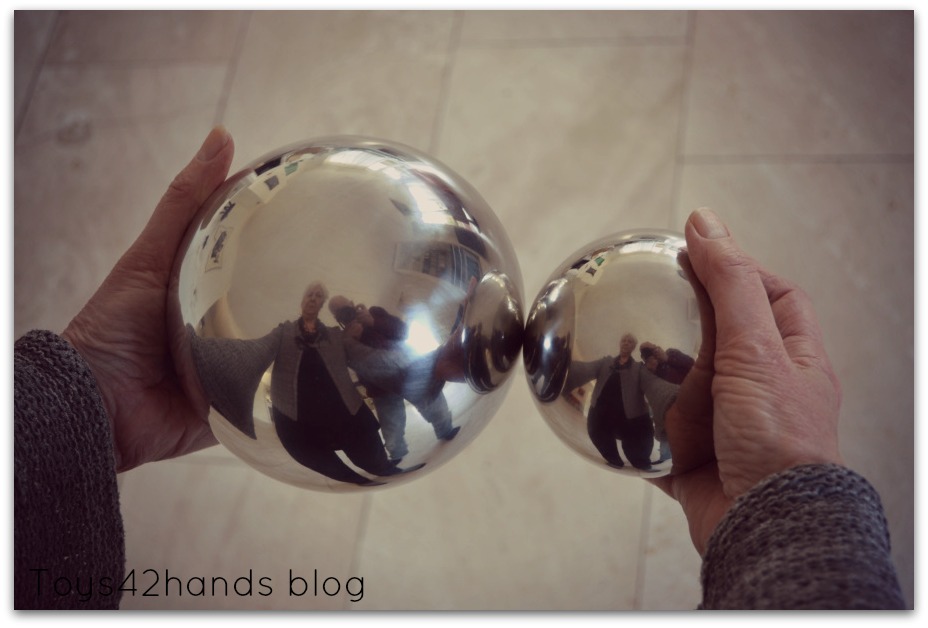
By holding the large ball in front of you with both hands and then slowly moving it up, down, sideways and towards you, your body deforms. This gives a funny effect that is therefore an immediate encouragement to continue. Of course, you can also move with a ball in each hand. In order to continue to see your own reflection clearly, you must keep the two balls against each other.
3. Move hands
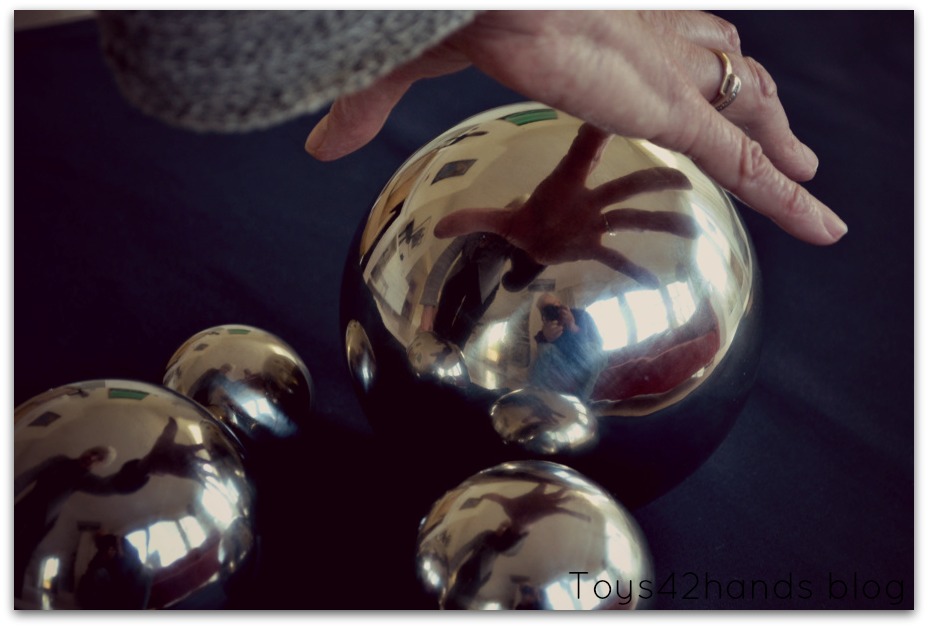
By placing the four balls on the ground or on a table you also get the funhouse mirror effect by getting closer and further away. The effect of picking up the balls with your hands is also very funny. It looks like you have giant hands.
The fun mirror game is especially funny and gives pleasure so that children will continue with it automatically. It provokes movement, especially slow and attentive movement, while you always look at what you are doing. It also stimulates eye-following movements, the cooperation between the eyes and the hands, and the hands among themselves.
4. 'Billiards' game
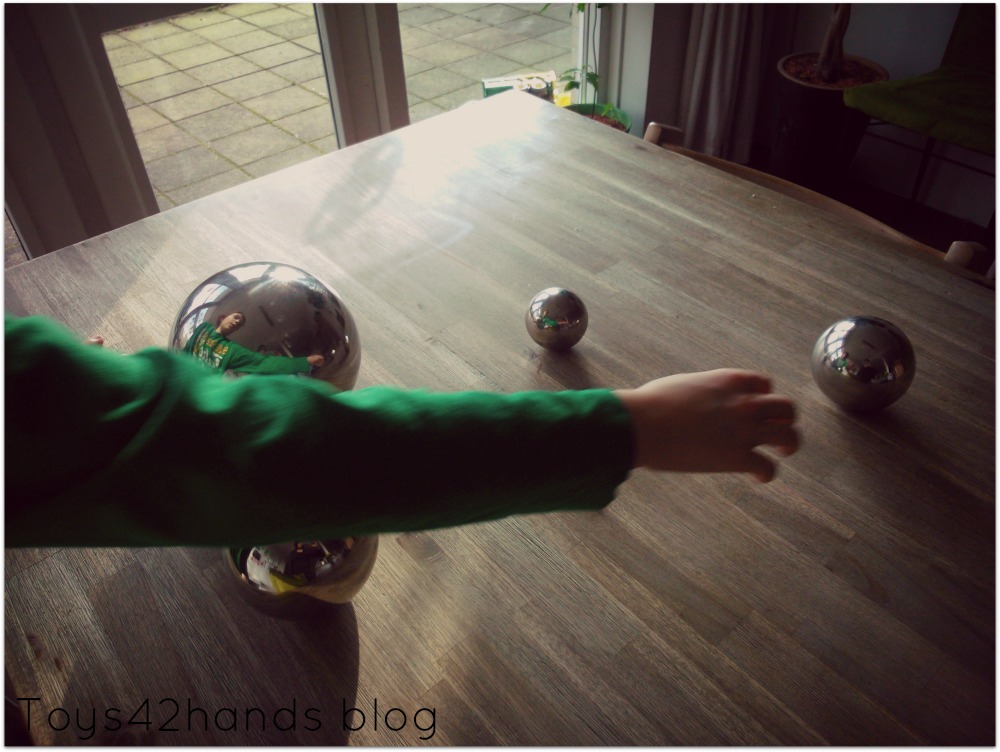
The balls also really tempt you to roll them over the floor. I found that it went best on solid carpeting, a rug or a fitness mat. You can then play a kind of billiards game or jeu de boules game with them. By placing a ball in the space, a child can try to hit the first ball with another ball. You can also try to hit two or maybe even three balls. This allows for all kinds of game variations, such as how many times do you have to roll before you have hit all three other balls, how many times with the big ball and how many times with the smaller balls? Can you also make the big ball roll under a chair, a table or a bed by hitting it with another ball? These kinds of games are often a lot of fun to play with your child or several children. In this way, you can turn it into a competition.
The game of billiards requires children to have spatial insight and purposeful movement. The effect of their movements - rolling the ball in the right direction or not - is immediately visible. They can then try again by moving closer or further away, making it more difficult or easier. A smaller or larger ball can also be used. To make it a game, it must be a feasible challenge - so not too difficult but also not too easy.
To look:
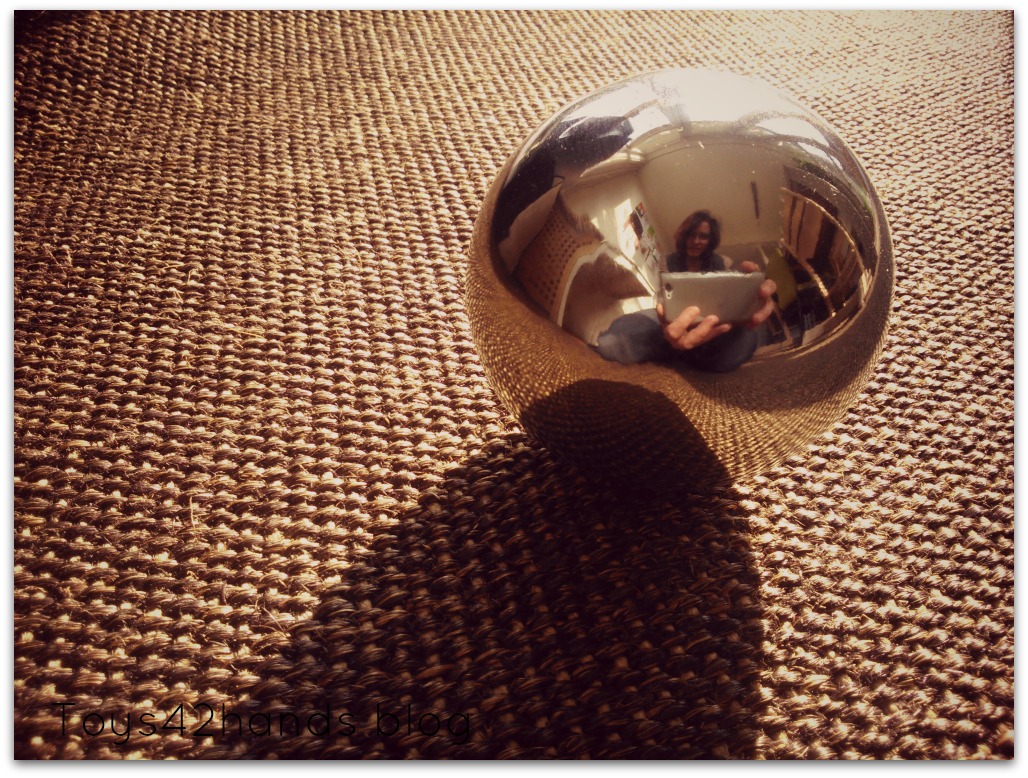
Due to their mirrored surface, which makes the balls stand out, they can also be hidden very visibly in a room, cupboard or classroom. Children can then try to find the balls just by looking. It is fun to let children alternate between hiding and searching for the balls. The balls are also just nice to look at and can certainly also be used as decoration for older children.
Feel:
The balls mainly encourage picking up and looking. Their smooth surface gives them a fairly neutral feeling – children will not quickly find the balls annoying to touch. However, they can also be used for tactile games. For example, the balls can be put in a pillowcase and the child can be asked to find the largest, the second largest, the second smallest or the smallest ball without the child looking in the pillowcase. A ball can also be hidden under the child's sweater without the child seeing it. He can then also feel which ball is under his sweater. For children who have difficulty feeling, it can sometimes be difficult enough to get a ball out of a pillowcase or from under their sweater without having to say anything about the dimensions.
To belong: 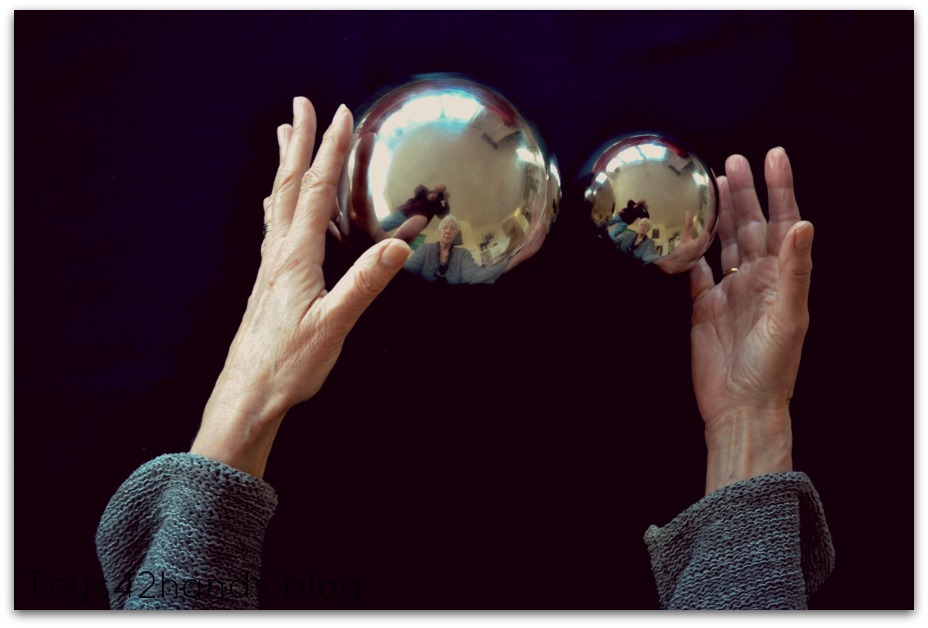
By rolling the balls over the ground and against each other, the balls make a pleasant sound. Some children may enjoy tapping the balls against each other from a short distance. You use both hands alternately and ensure that the balls remain between them. In addition to the cooperation of both hands, you can make music in this way, as it were.
Sensory Reflective Balls can be played in many different ways. They most often provoke looking in combination with movement. Both the movement of the child itself and the balls help to stay attentive and continue the game. Due to the many variation possibilities, the balls are certainly suitable for children from 2 to 10 years old.

























